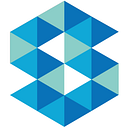In today’s rapidly evolving business landscape, successful product development is crucial for staying ahead of the competition. As we enter 2023, businesses must adapt to new market trends and consumer demands to create innovative and impactful products. In this blog, we will provide a comprehensive guide to product development in 2023 and beyond. From ideation to launch, we’ll explore the key steps, strategies, and best practices that businesses should follow to drive successful product development initiatives.
- Market Research and Consumer Insights: The foundation of effective product development lies in thorough market research and understanding consumer insights. Identify market trends, analyze competitors, and gather data to gain a deep understanding of your target audience’s needs, preferences, and pain points. Utilize various research methods, such as surveys, interviews, and data analytics, to gather valuable insights. This information will serve as a guiding compass throughout the product development process, helping you make informed decisions and develop products that truly resonate with your target market.
- Ideation and Concept Development: Once armed with market insights, it’s time to generate ideas and concepts for your new product. Encourage creativity and collaboration within your team to explore innovative solutions that address the identified market needs. Brainstorm ideas, sketch out concepts, and evaluate their feasibility, viability, and potential impact. Embrace a user-centric approach, focusing on creating products that provide value and solve real problems for consumers. Narrow down the concepts based on market potential, technical feasibility, and alignment with your business goals.
- Prototype and Testing: Prototyping is a crucial step in the product development process. Create a prototype that accurately represents the envisioned product and conduct thorough testing. This can involve user testing, focus groups, or beta testing with a select group of customers. Gather feedback, analyze user interactions, and iterate on the prototype to refine the product design and functionality. Incorporate feedback and make necessary improvements to enhance the user experience and address any potential issues. Prototyping and testing ensure that your product meets customer expectations and minimizes the risk of costly failures in the market.
- Design and Development: With a validated prototype, it’s time to move into the design and development phase. Collaborate with designers, engineers, and developers to transform the concept into a fully functional product. Focus on creating a seamless user experience, intuitive interface, and appealing aesthetics. Leverage the latest technologies and design principles to create a product that stands out in the market. Maintain open communication between teams to ensure that design and development are aligned with the initial concept and market requirements.
- Iteration and Agile Development: Embrace an agile approach to product development, enabling flexibility and continuous improvement. Break the development process into smaller iterations or sprints, allowing for regular testing, feedback, and iteration. This iterative approach ensures that you can adapt to market changes, incorporate user feedback, and make necessary adjustments along the way. Maintain a collaborative and transparent environment, encouraging cross-functional teams to work together and communicate effectively. Agile development enables faster time-to-market, reduces the risk of costly errors, and increases the overall quality of the final product.
- Launch and Post-Launch Evaluation: As your product nears completion, prepare for a successful launch. Develop a comprehensive marketing and communication strategy to generate buzz and create awareness. Leverage various channels, including digital marketing, social media, and PR, to reach your target audience effectively. Monitor the launch closely, gather customer feedback, and track key performance indicators to evaluate the success of the product. Analyze user adoption, customer satisfaction, and sales data to gain insights and identify areas for improvement. Use these insights to inform future product iterations and enhancements, ensuring the continuous evolution of your product offering.
Conclusion
In the dynamic business landscape of 2023 and beyond, successful product development requires a strategic and customer-centric approach. By conducting thorough market research, embracing agile development methodologies, and prioritizing user feedback, businesses can drive innovation and create products that resonate with their target audience. Follow this guide to navigate the product development journey and unlock new opportunities for growth and success.
